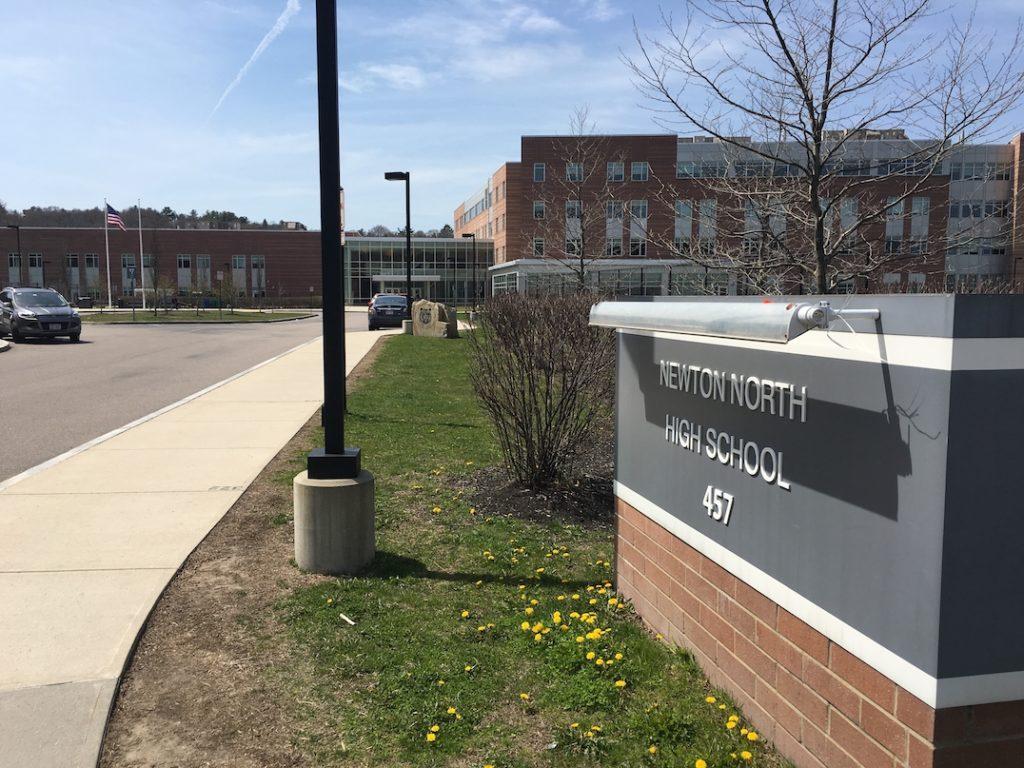The Newton school district is making plans for its high schools to adopt a new, more efficient schedule that would cut the length of an average day by 24 minutes and allow for possible later starts to the school day. The initiative plans to align Newton North and South high schools, which currently operate on different schedules, in the fall of 2020.
Currently, the longest school days at Newton North and South—which have rotating schedules that change every day—last 7 hours and 30 minutes and 7 hours and 40 minutes, respectively. Under the new plan, the school day at both high schools would last 6 hours and 45 minutes, with the exception of Tuesdays, which would last 6 hours and 25 minutes.
The more efficient school day would facilitate a possible later start time for the high schools. The district is reviewing three different alternatives for new start times—which would push them back to either 8:10, 8:45, or 9:00 a.m. Currently, Newton North starts at 7:50 a.m., and Newton South starts at 7:40 a.m.
Work on redesigning the school schedules began a little over two years ago, when members of the Newton community were interested in changing high school start times to be better aligned with adolescent sleep schedules, said Toby Romer, assistant superintendent of Newton secondary schools.
Students, families, and faculty were extensively surveyed as the district began to work on the initiative, and it became clear that simply pushing the school day back, creating significantly later end times, would have a negative impact on the community, according to Romer.
“We quickly realized that without creating a more efficient high school schedule, we would have challenges with later end times—with family routines and extracurricular activities and other conflicts that would negatively impact student wellness,” Romer said. “So we created a committee to work on redesigning the high school schedules to be more efficient, and also better aligned with our values in education.”
Several school districts around the country have made the move to delay start times in recent years, according to ABC News—many Massachusetts high schools, such as Acton-Boxborough, Melrose, and Ashland, included.
The American Academy of Pediatrics recommends that middle and high schools start no earlier than 8:30 a.m. Moving the start times back, the academy said, allows for a better alignment of the school schedule and adolescents’ natural sleep-wake cycles—which can shift up to two hours later in the day after the beginning of puberty.
“The research is clear that adolescents who get enough sleep have a reduced risk of being overweight or suffering depression, are less likely to be involved in automobile accidents, and have better grades, higher standardized test scores and an overall better quality of life,” said pediatrician Judith Owens, lead author of the academy’s policy statement “School Start Times for Adolescents,” in a release.
“Studies have shown that delaying early school start times is one key factor that can help adolescents get the sleep they need to grow and learn,” Owens said.
The Centers for Disease Control and Prevention and American Medical Association also released studies and statements supporting later school start times for adolescents.
Newton North and South’s new schedule would cut the average amount of daily class time by 23 minutes, as well as eliminate the current “X” and “J” blocks from Newton North and South’s respective schedules.
The “X” and “J” blocks, which are optional and occur at the end of the school day, includes time for students to meet with teachers for extra help and attend club meetings and other activities. Students who participate in athletics and other after-school extracurriculars are often unable to participate in the X and J blocks, Romer said.
Instead of the “X” and “J” blocks, the new schedule adds daily flexible learning time, or “flex blocks,” to every school day. These blocks—designed “for social and emotional learning and academic support”—will occur in the middle of the school day, with the exception of Tuesdays, when they will occur at the end.
“Some of the similar J and X block activities are carried over into flex block … but there [are] a lot more options for what we can do with flex block,” Romer said. “It’s more frequent, there are more options, and everybody can participate. So it’s not inequitable.”
Students would be able to use the flex block in a multitude of ways: getting extra help from teachers, making up tests, working with counselors on skill development, or completing assignments. They’ll also have the option to take part in classes that aren’t typically part of the curriculum—such as Japanese calligraphy, yoga, or meditation. Assemblies and visits from college admissions reps would also happen during the flex block, instead of interrupting academic learning time as they do now.
Because Newton has more than 12,000 students who attend many different schools and rely on buses for transportation, changing the start time is a more complex process than it is in other similar communities, Romer said.
Delaying the start times of Newton high schools, for example, will affect the start times of the middle and elementary schools in the district, which could potentially have to move their start times earlier.
“There’s definitely trade-offs involved anytime that we would potentially change the start times,” Romer said.
While the majority of elementary and middle school families indicated in their feedback that they would prefer to have their current start times maintained, doing so would cost the district $1.1 million in additional transportation. The district would be unable to take on this cost without decreases in its core academic services, Superintendent David Fleishman and the Newton School Committee explained in a letter to families.
“We’ve yet to get all of the feedback that we want from parents and teachers at the elementary level—so that’s some of our next work that we need to do. But our goal is to have start times that are more developmentally appropriate for students at their age span, and also times that work for families and faculty members.”
Featured Image Courtesy of ArnoldReinhold / Wikimedia Commons













